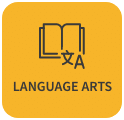- British Columbia:
- Math
- Language Arts
- Social Studies
- Science
British Columbia
Skills available for British Columbia Grade 1 Math Curriculum
Expectations are in black and skills are in blue. Click on the name of the skill to practice that skill.
Please check back as we are always adding more content!
Numbers to 20 represent quantities that can be decomposed into 10s and 1s.
NUMBER CONCEPTS TO 20
base 10
counting and skip-counting by 2 and 5
Digital Resources
Printable Worksheets
comparing and ordering numbers to 20
numbers to 20 can be arranged and recognized
subitizing
WAYS TO MAKE 10
decomposing 10 into parts
numbers to 10 can be arranged and recognized
Digital Resources
Printable Worksheets
benchmarks of 10 and 20
Digital Resources
Printable Worksheets
Traditional First Peoples counting methods involved using fingers to count to 5 and for groups of 5.
Digital Resources
Printable Worksheets
traditional songs/singing and stories
Digital Resources
Printable Worksheets
Addition and subtraction with numbers to 10 can be modelled concretely, pictorially, and symbolically to develop computational fluency.
addition and subtraction to 20 (understanding of operation and process)
decomposing 20 into parts
Digital Resources
Printable Worksheets
mental math strategies
Digital Resources
Printable Worksheets
• Turn Around Addition Strategy
• Counting Doubles Addition Strategy
• Doubles Plus One Addition Strategy
• Draw a Picture Addition Strategy
• Addition Word Problems – Activity 1
• Addition Word Problems – Activity 2
• Minus Zero Subtraction Strategy
• Counting Back Subtraction Strategy
• Using a Number Line to Subtract
• A Number Minus Itself Subtraction Strategy
• Doubles Subtraction Strategy
• Draw a Picture Subtraction Strategy
addition and subtraction are related
whole-class number talks
Digital Resources
Printable Worksheets
Repeating elements in patterns can be identified.
REPEATING PATTERNS WITH MULTIPLE ELEMENTS AND ATTRIBUTES
identifying sorting rules
Digital Resources
Printable Worksheets
• Patterns Are All Around Us! – Activity 1
repeating patterns with multiple elements/attributes
Digital Resources
Printable Worksheets
translating patterns from one representation to another (e.g., an orange-blue pattern could be translated to a circle-square pattern)
letter coding of pattern
Digital Resources
Printable Worksheets
predicting an element in repeating patterns using a variety of strategies
Digital Resources
Printable Worksheets
• Extend the Pattern – Activity 1
• Extend the Pattern – Activity 2
• How Does the Pattern Attribute Change? – Activity 1
• How Does the Pattern Attribute Change? – Activity 2
• Identifying and Describing Patterns
patterns using visuals (ten‐frames, hundred charts)
investigating numerical patterns (e.g., skip-counting by 2s or 5s on a hundred chart)
beading using 3–5 colours
change in quantity to 20, concretely and verbally
verbally describing a change in quantity (e.g., I can build 7 and make it 10 by adding 3)
meaning of equality and inequality
demonstrating and explaining the meaning of equality and inequality
recording equations symbolically, using = and ≠
Objects and shapes have attributes that can be described, measured, and compared.
direct measurement with non-standard units (non-uniform and uniform)
Non‐uniform units are not consistent in size (e.g., children’s hands, pencils); uniform units are consistent in size
Digital Resources
Printable Worksheets
• Exploring Measurement: Non-Standard Units – Set 1
• Exploring Measurement: Non-Standard Units – Set 2
• Exploring Measurement: Centimetres – Set 1
• Exploring Measurement: Centimetres – Set 2
• Exploring Attributes: Comparing Length
• Exploring Attributes: Comparing Height
understanding the importance of using a baseline for direct comparison in linear measurement
Digital Resources
Printable Worksheets
iterating a single unit for measuring (e.g., to measure the length of a string with only one cube, a student iterates the cube over and over, keeping track of how many cubes long the string is)
Digital Resources
Printable Worksheets
tiling an area
Digital Resources
Printable Worksheets
using body parts to measure
Digital Resources
Printable Worksheets
comparison of 2D shapes and 3D objects
sorting 3D objects and 2D shapes using one attribute, and explaining the sorting rule
Digital Resources
Printable Worksheets
comparing 2D shapes and 3D objects in the environment
Digital Resources
Printable Worksheets
describing relative positions, using positional language
Digital Resources
• Positional Language: On and Under
• Positional Language: Above and Below
• Positional Language: Beside and Next to
• Positional Language: In Front of and Behind
• Positional Language: Left, Middle, and Right
Printable Worksheets
• Exploring Positional Words – Activity 1
replicating composite 2D shapes and 3D objects (e.g., putting two triangles together to make a square)
Digital Resources
Printable Worksheets
Concrete graphs help us to compare and interpret data and show one-to-one correspondence.
concrete graphs, using one-to-one correspondence
creating, describing, and comparing concrete graphs
Digital Resources
Printable Worksheets
• Exploring Tally Charts – Activity 1
• Exploring Tally Charts – Activity 2
• Exploring Pictographs – Activity 1
• Exploring Pictographs – Activity 2









